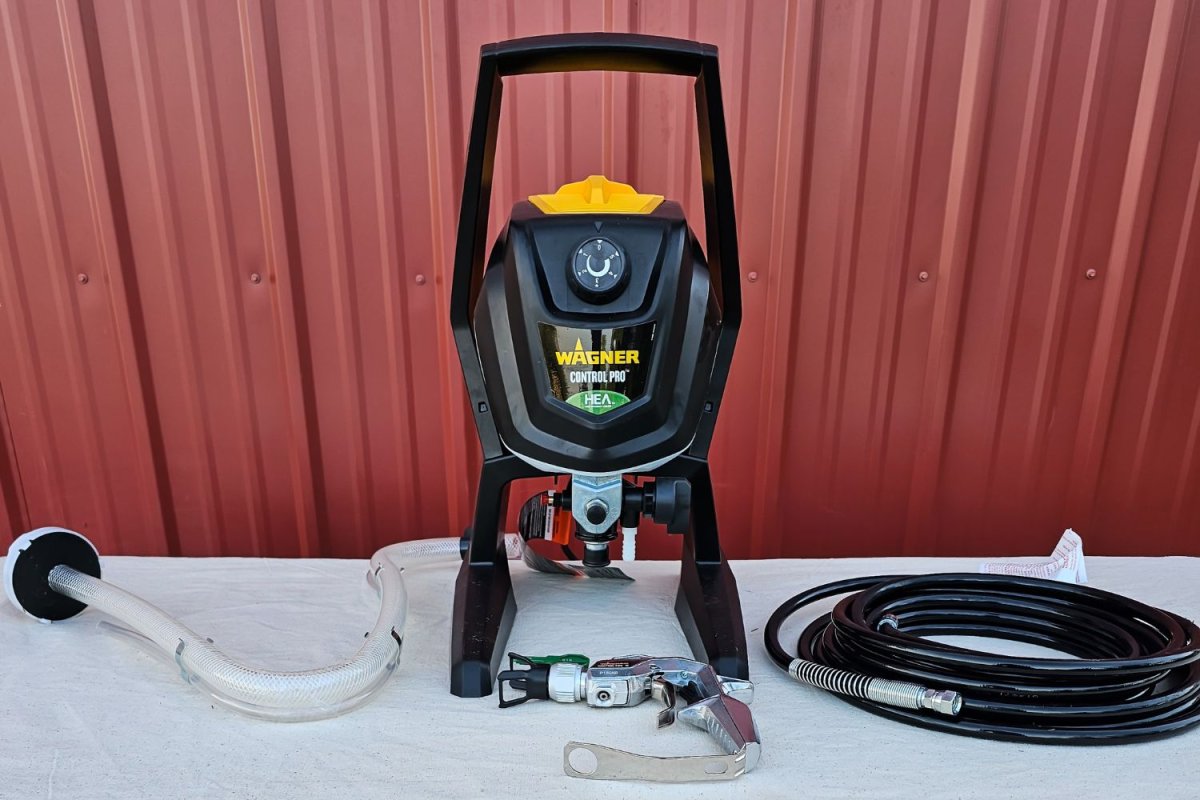

We may earn revenue from the products available on this page and participate in affiliate programs. Learn More ›
When it comes to quickly painting large surfaces, such as walls, or getting a professional-looking finish on contoured projects, such as detailed molding, airless paint sprayers have become the tool of choice. The Wagner Control Pro 170 airless paint sprayer, a notable addition to Wagner’s lineup, enhances DIY and professional painting endeavors. Used correctly, a paint sprayer will not only save time on painting projects, but it can also mean a vast improvement over the quality of a job completed with a brush and/or roller, offering the average person pro-quality results.
The Wagner company is well known for its cutting-edge paint solutions, which include a range of sprayers, rollers, portable paint tents, and even heat guns for stripping off old finish. The Control Pro 170 is a mid-range spray rig that performs as well as higher-priced rigs, making it a top choice for those interested in selecting the best paint sprayer.
I tested the Wagner Control Pro 170 airless paint sprayer on my own painting project (a garage door panel). I examined every aspect of its performance, usability, and versatility for spraying latex paint. It’s not perfect, but if you can overlook its minor flaw (which does not affect the quality of the spray), this may be the ideal paint sprayer for your projects. DIYers looking to upgrade from a budget sprayer to a larger-capacity airless model may want to consider the Control Pro 170. Ahead, find out the pros and cons of this sprayer.
Wagner Control Pro 170 Paint Sprayer: At a Glance
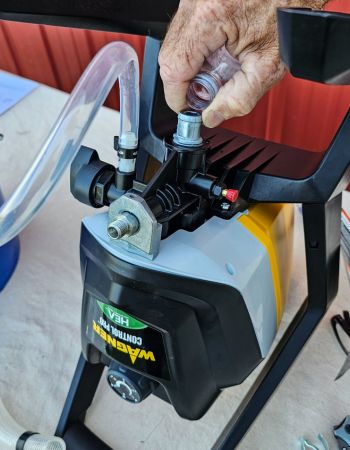
Rating: 8.75/10
SPECS
- Sprayer type: Airless
- Motor: .60 horsepower (hp)
- Max operating pressure: 1,500 pounds per square inch (psi)
- Spray tips: 1 included, tip number 515
- Suitable products: Interior and exterior latex paint, wood sealers, water-based lacquers, urethane, transparent and semitransparent stain, solid stain
PROS
- The Wagner electric paint sprayerdelivers uniform spray coverage, providing results comparable to higher-priced spray rigs
- The Control Pro 170 accommodates several paint types, making it versatile for a wide range of DIY projects
- Priced around $350, the sprayer is an affordable option for those seeking high-quality results without investing in professional-grade equipment
- Inclusion of high-efficiency airless (HEA) technology minimizes overspray by up to 55 percent, reduces waste, and ensures a cleaner painting experience
CONS
- Some users may encounter challenges with the initial pump-priming procedure
- Users new to airless paint sprayers may experience a learning curve in mastering the proper arm-movement speed and pressure settings
- Prompt cleaning and maintenance are essential to preserve the sprayer’s efficiency and longevity
Get the Wagner Control Pro 170 paint sprayer at:
What is the Wagner Control Pro 170 paint sprayer?
The Wagner airless paint sprayeris a powerful tool designed to apply a uniform paint mist for a flawless finish. Equipped with HEA technology, it offers up to 55 percent less overspray to minimize waste and offer a cleaner painting experience. With a maximum operating pressure of 1,500 psi and a flow rate of 0.33 gallons per minute, the Control Pro 170 can handle a variety of paints, including latex, acrylic, enamels, polyurethane, and oil-based, and also solid stains.
One of the standout features of the Control Pro 170 is its ability to deliver an even, fine spray without creating drips and runs. The variable-pressure control knob allowed me to adjust the spray intensity according to my specific needs, and I found the included 515 Control Pro tip offered precise and consistent coverage. This particular tip provides a broad 10- to 15-inch spray pattern suitable for medium- to large-size projects.
Its 30-foot flexible air-gun hose gave me good reach and mobility, eliminating the need to reposition the unit during my painting test. Overall, the Wagner Control Pro 170 stands out from other mid-range spray rigs by offering impressive performance. It is a valuable tool for achieving professional-grade results on many types of painting projects.
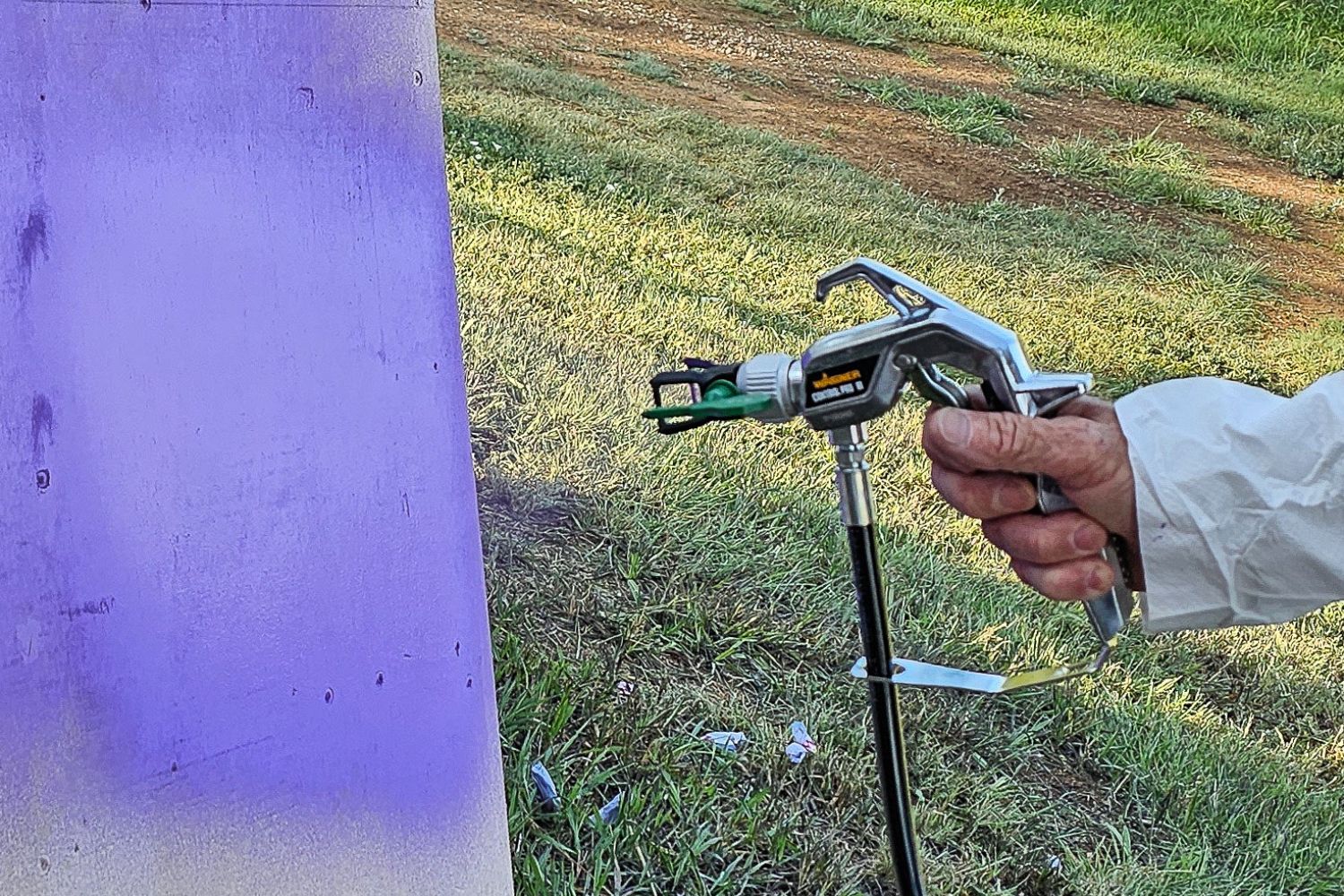
How easy is it to assemble and set up the sprayer for painting?
Assembling the Wagner Control Pro 170 airless paint sprayer is generally straightforward, with most components quickly snapping into place. However, during my testing, I encountered a minor challenge with the initial pump-priming process, which bleeds all the air out of the hose and the pump to ensure uniform spraying without sputtering.
While connecting the paint hoses and securing them with wrenches was manageable, the sprayer failed to prime as expected after I followed the prescribed steps in the manual. This must be a common issue, as the manual offers additional steps for priming if the first method doesn’t work.
After I experienced two failed priming attempts, the manual instructed me to remove the hoses, turn the unit upside down, and pour a small amount of water into the paint-intake valve. That worked. On the upside, the manual and instructions are clearly illustrated and easy to follow. If I were allowed one request, I’d ask Wagner to upgrade the priming mechanism on the Control Pro 170 to offer better results on the first try.
What type of paint or stain can I use in the Control Pro 170?
The Wagner Control Pro 170 is compatible with various paint and stain types, making it an ideal choice for several types of projects. This sprayer can use latex, acrylic, enamels, polyurethane, oil-based paints, and solid stains. Whether you’re working on interior walls, furniture, fences, or other outdoor surfaces, the Control Pro 170 will likely accommodate your preferred paint or stain.
When using any interior or exterior paint or stain, you’ll need to strain the product first. This reduces the risk of the spray gun clogging. The end of the paint hose on the Control Pro 170 comes with an attached plastic strainer, which helps, but users cannot depend on it to remove all small bits of debris. You’ll need to strain the paint using a clean bucket and a paint-straining bag to remove any lumps that may clog the spray gun—just line a clean 5-gallon bucket with the bag and pour the paint in. Then, lift the bag out and allow the excess paint to run through.
The Wagner paint sprayer comes with one paint tip (number 515), which is suitable for use with acrylics, enamels, polyurethanes, and latex paints and primers, and should be applied with medium to high settings (3 to 5). The Wagner sprayer features a power dial that ranges from 0 to 5, with 0 being “off” (no spray) and 5 being the highest spray force.
It’s helpful that the 515 is included with purchase, since the abovementioned products are the most commonly used products. However, other tips are available for the following:
- 212: interior stains, water sealers (use on low-medium pressure 1 to 3)
- 311: interior stains, interior clears, water sealers (use on low-medium pressure 1 to 3)
- 313: exterior solid stains, acrylic paint, acrylic sealers, enamel, polyurethane (use on medium-high pressure 3 to 5)
- 413: exterior solid stains, acrylic paint, acrylic sealers, enamel, polyurethane (use on medium-high pressure 3 to 5)
- 517: latex paint, latex primer, oil primers (use on high pressure 5)
- 619: oil primer, exterior latex paint (use on high pressure 5)
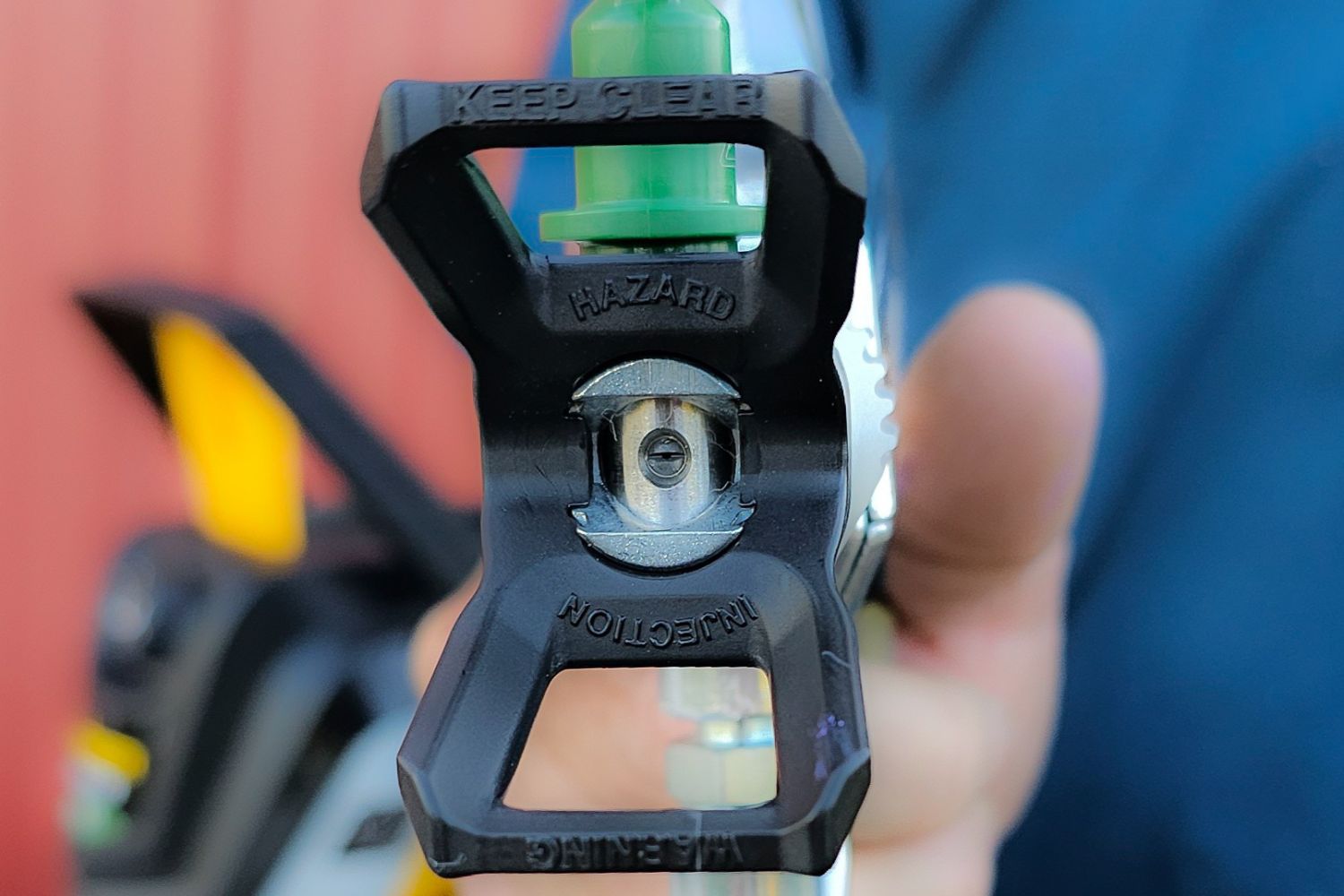
How can I get the best results from the Wagner paint sprayer?
For the best spray-painting results, users absolutely must strain the paint (see description above). We also recommend spraying a test board before using the Wagner paint sprayer on your actual project. By spraying on the test board first, you can gauge the speed you need to move the spray gun across the actual project for even coverage. Additionally, the test board allows you to identify the ideal distance between the sprayer and the surface—for me, that was about 18 inches.
Selecting the proper pressure setting is also essential for achieving professional results. The Wagner paint sprayer offers multiple pressure settings, ranging from “off” to high (0 to 5). Start with the lowest and work your way up until you get the results you’re looking for. In my test, I ended up using the number 3 pressure setting, and it was as close to perfect as I’ve ever seen in an airless paint sprayer.
As a general rule, use a low-pressure setting on smooth surfaces or delicate projects, such as interior walls, to reduce overspray and ensure better control. Rougher surfaces or outdoor projects may require a higher pressure to achieve adequate coverage and penetration into textured areas.
Don’t forget to wear proper protective gear, including a head sock, a paint suit, and a respiratory mask, to protect yourself from potential overspray and paint fumes while painting.
One last thing: Paint clumps can devastate a spray gun, so even after you strain the paint, take steps to keep it smooth by putting a damp towel over your paint bucket, which will keep the surface of the paint from drying and forming clumps.
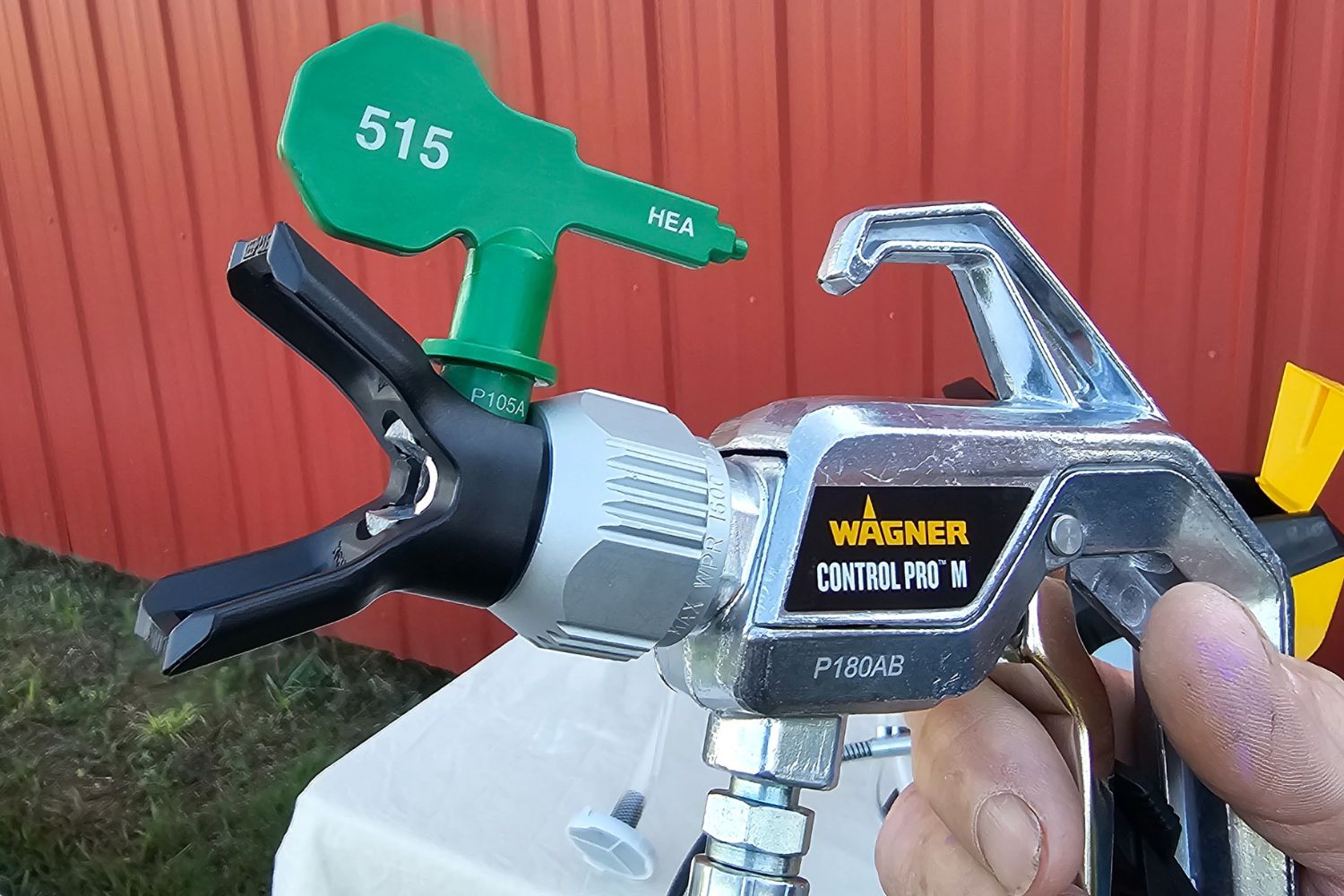
Should you buy the Wagner Control Pro 170 paint sprayer?
If you are a DIY enthusiast looking for a sprayer that offers high-end results, the Wagner Control Pro 170 airless paint sprayer could be the perfect fit. With a price tag of around $350, the Wagner is somewhere between a hobby or craft spray gun and a professional spray rig, making it a cost-effective option for achieving professional-grade results.
The Control Pro 170 is probably best suited for DIY projects. However, its high-efficiency HEA technology and ability to handle various paint types (from latex to enamels) provides the capability to deliver exceptional finishes akin to those achieved by professionals. The priming process is a little more work than what’s involved for higher-priced rigs, though.
Overall, the Wagner Control Pro 170 airless paint sprayer strikes a balance between affordability and performance, making it an excellent choice for DIYers seeking reliable and high-quality results without breaking the bank.
Where to Buy the Wagner Control Pro 170 Paint Sprayer
Get the Wagner Control Pro 170 paint sprayer at:
Meet the Tester
Glenda Taylor is a product tester and writer specializing in the construction, remodeling, and real estate industries. She and her husband own a general contracting company, and Taylor is experienced in both residential and commercial building applications. She tests a wide range of power tools and other home improvement, household, and lawn-and-garden products.
